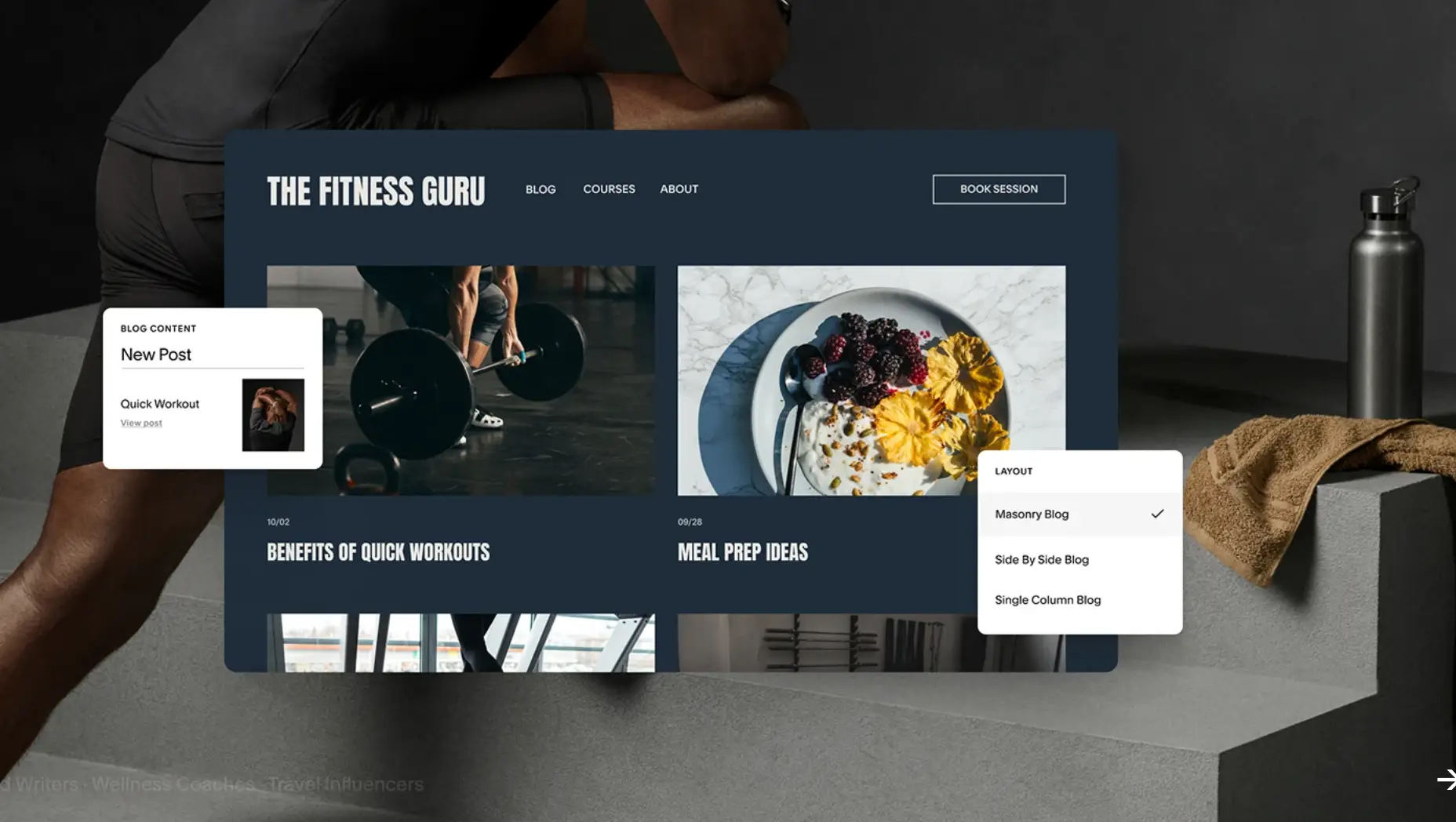
How to Remove Background Noise from Video in Premiere Pro (2025 Guide)
Let’s face it: there is nothing more frustrating than capturing the perfect shot, only to realize later that the audio is a disaster.

Let’s face it: there is nothing more frustrating than capturing the perfect shot, only to realize later that the audio is a disaster.

Comparing Webflow vs. WordPress vs. Wix vs. Squarespace for SEO in 2025? Your choice sets the ceiling for site speed & growth. We break down the trade-offs: performance, technical control, content scale, and which platform fits your team's capacity, from complex B2B (WordPress/Webflow) to solo founders (Wix/Squarespace).

The way we consume movies and TV shows has changed dramatically in recent years. Streaming platforms have grown so much that many people now prefer watching from home instead of going to cinemas. That shift affects the entire film industry, and also creates exciting opportunities for viewers who want top-quality experiences.

In today’s world, staying safe online is no longer an option—it’s a necessity. Between growing privacy concerns and the rising number of data breaches, everyone needs a simple way to protect their personal information. This is where iTop steps in.

Why Website Pricing in 2025 Feels All Over the Place? This guide breaks down the true cost of a professional website in 2025. Learn the typical upfront and ongoing budgets for DIY, freelancer, and agency builds, and discover the 7 key factors that move a project from simple design to strategic product development.
.jpg)
Learn how to publish a compliant and attractive Public Website Design RFP. This 2025 guide covers everything from defining outcomes and aligning budget to meeting new ADA Title II/WCAG accessibility rules. Attract top agencies and reduce project risk. (297 characters)

Complex websites are where navigation either quietly supports the business or quietly damages it. Large catalogs, multi‑audience portals, and app‑plus‑marketing ecosystems all depend on people finding what they need quickly and reliably. When navigation fails, revenue, trust, and compliance all suffer.

Discover the best fintech design companies. Learn how to choose the right partner and find agencies that create clear, scalable digital experiences.

There’s a moment many brands experience now, a quiet realization that the world has shifted. Visibility is no longer earned through the largest billboard or the most polished campaign.

Many companies today decide to migrate their applications to the cloud. A cloud environment offers several advantages, especially when it comes to flexibility and scalability. In the past, many organizations depended on servers that required a lot of maintenance and were difficult to scale.

The launch of the new Sidekick mechanic is an interesting turning point for Fortnite. Optimistically, it brings a new layer of personalization for the game played by around 1.5 million players every single day. On the other hand, Epic Games have prompted some questions about the effect on player experience and the long-term identity of the game.

Explore essential quantitative UX research methods in our definitive guide. Learn to leverage analytics, A/B testing, and user data to make informed design decisions.

The modern enterprise sales motion is a multi-threaded machine: SDRs qualify inbound leads, AEs orchestrate discovery and demos, solutions engineers run POCs, legal reviews contracts, finance approves pricing exceptions, and customer success manages renewals.

Perplexity has quickly become one of the most influential AI search engines in the world. Its conversational interface, citation-based answer system, and real-time web access make it a go-to platform for users researching products, services, and local businesses.

A practical workflow to cut approval time without risk. Roles, SLAs, change control, and a simple markup and audit trail.

Manufacturers must give SEO top priority as digital marketing grows in order to remain competitive in a crowded online market. In addition to increasing visibility, effective SEO tactics attract suitable clients who are actively looking for manufacturing services and goods.

In the Moment’s presto-paced digital world, the way lines are managed, delivered, and converted has shifted dramatically. With constant advancements in technology, businesses need to keep up with innovative ways to manage digital means.

Learn how software product development services help companies build scalable, market-ready digital products with speed and clarity.

Suspension and frame damage represent the most critical structural issues in salvage vehicles. Unlike cosmetic damage that affects appearance, structural problems compromise safety, handling, and long-term reliability. Identifying these issues before bidding protects buyers from purchasing vehicles that can never be properly restored.

Businesses and individuals in need of government services can now access it seamlessly through a Government Gateway Account. The online platform simplifies tasks for businesses and individuals.

Clear communication is one of the essential components for the success of digital marketing projects in the connected world we live in today.

Branded search is what happens when people type your name into Google instead of a generic term. Learn what a branded search is, why brand search volume matters, and how to optimize branded search so your site earns every high-intent click.

Discover how to design a telemedicine app that’s clear, inclusive, and trusted by every patient through simple UX, emotional tone, and user-centered design.

As a result of the fierce competition in the digital arena, companies are regularly looking for new methods of connecting with their audiences in an authentic way.

Recessions challenge businesses, but the smartest brands balance cost-cutting with strategic growth. Learn how companies—from startups to global corporations—adapt, innovate, and seize new opportunities during downturns.

Discover everything you need to know about branding, from defining your brand identity to crafting a winning brand strategy that builds trust, loyalty, and recognition. Learn how businesses use branding to stand out in competitive markets, enhance customer engagement, and drive long-term success.

Dive into 15 major stocks plummeting in early 2025, from tech to utilities. See why they’re down, how they compare to the market, and what analysts predict next.

Explore 18 award winning websites from e-commerce to activism. See how top Webby Award winners leveraged creativity, tech, and storytelling to captivate online audiences.

Explore the top 20 finance programs from Oxford to MIT. Discover curriculum highlights, ROI, and alumni success that set these leading global finance universities apart.

Explore the top 20 medical schools worldwide in 2025, from Oxford to Harvard. Uncover why they’re ranked so high, their notable alumni, and their global healthcare impact.

Dive into Alibaba’s transformation from a modest Hangzhou startup to a global e-commerce giant. Explore Jack Ma’s vision, strategic growth, and Alibaba’s digital innovation.

Discover the biggest Canadian food companies 2025, from dairy and meat giants to plant-based innovators.

Uncover standout celebrity brand collaborations shaping 2025. Explore how pop icons, athletes, and entertainment stars merge culture and innovation to redefine global markets.

Explore the top web design trends in 2025, from minimalism to AI-powered experiences. Discover how future-ready design shapes immersive, responsive, and inclusive user journeys.

Explore these top Canadian index funds covering all-cap, mid-cap, and financial-focused ETFs. Lower fees, broad diversification, and steady returns make them a smart choice.

Explore the 15 Highest Rated Universities in the United States for 2025, featuring global ranks, achievements, and Nobel Prize connections. A must-read for aspiring scholars.

See how these Highest Rated Law Schools earned top spots in Global Law School Rankings. From Ivy League icons to historic European powerhouses, they define world-class legal education.

Explore how music legends set mind-blowing revenue records. From rock icons to pop superstars, these 15 biggest concert tours prove live shows can redefine the industry.

In this guide, we’ll walk through some of the best countries for students seeking both academic excellence and fruitful career opportunities post-graduation. From advanced research in the United States to the cost-efficient degrees of Europe, there’s a fitting destination for every aspiration. Let’s take a closer look at each country’s offerings and see why they belong among the best countries to study abroad in 2025.

Check out these top fast food chains by number of outlets and learn how they’ve conquered the global market.

Discover 15 top online web design courses—both free and paid—to master coding, UX strategies, and responsive layouts.

By enrolling in one of the best online marketing courses, you’ll stay ahead of the curve, learning everything from fundamental concepts of SEO to advanced lead-generation strategies on social channels. Today, we’ve curated ten stand-out marketing online courses: each offering unique benefits, formats, and areas of specialization.

From verifying portfolios and SEO must-haves to confirming in-house teams and clarifying rates, each step is essential to avoid costly surprises. By applying these insights, you’ll gain clarity on how to match your brand identity and project scope with the right partner’s capabilities. Let's dive into the things you must add to your checklist before hiring a web design agency.

Discover the best loan options for startups and established businesses. From term loans to invoice factoring, learn how each financing tool supports your growth in 2025.

Discover 50 powerful quotes for entrepreneurs, leaders, and professionals, each with a quick meaning to help boost motivation, build resilience, and fuel success in 2025.

Explore the top 10 best-performing stocks of 2025, their impressive growth percentages, and what drove each company’s success.

Explore how tobacco marketing transformed from simple newspaper ads to sophisticated branding, celebrity endorsements, and digital strategies, all amid ever-tightening regulations.

Discover Canada’s top 15 universities based on the latest QS data. Learn about each institution’s strengths, notable alumni, and why they stand out in Canadian higher education.
Stay informed with the best tips, trends, and news — straight to your inbox.
By submitting I agree to Brand Vision Privacy Policy and T&C.